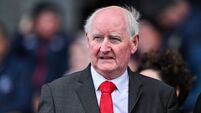Pictures speak as loud as words of Obama’s communications breakdown
You shouldn’t avoid it just because I’ll be a minor player at the event. Just how minor depends entirely on the mood of the master of ceremonies in charge of the Friday night dinner/discussion.
If George Hook is in good humour, I might get to speak for three minutes. If he’s not, it’ll be even shorter. One way or the other, luminaries such as Noel Whelan, Seán Gallagher, and John Waters will be there to startle, amuse, inform, and entertain. Not to mention corruption expert Elaine Byrne, who last year did so charming a riff about the educational value of card playing that it would make anybody want to take a quick lesson in whist, poker or 25.















